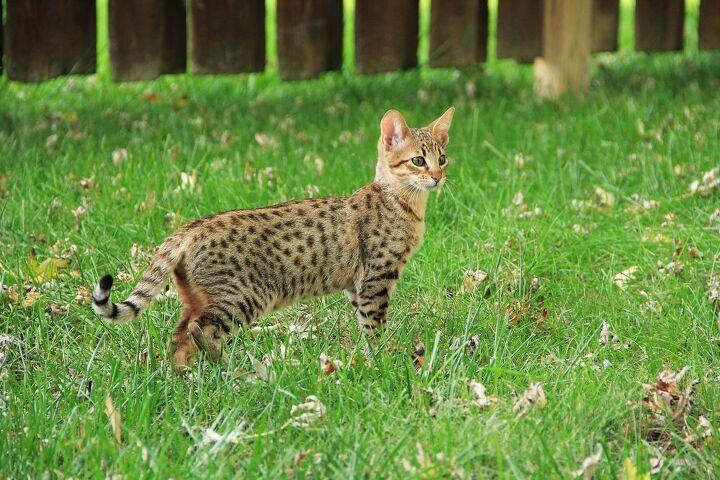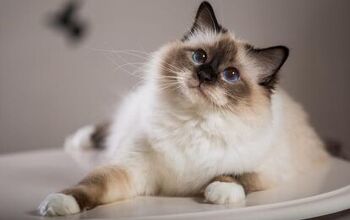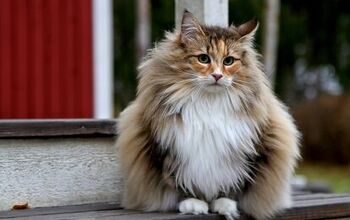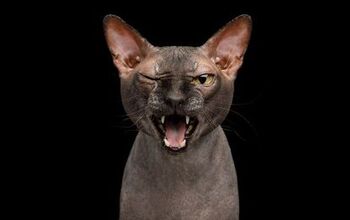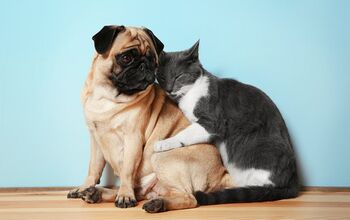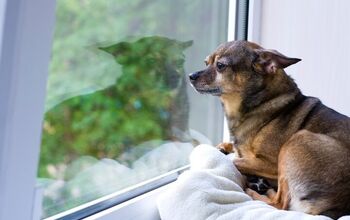Top 10 Exotic Looking Cat Breeds

If you think that your cat's haughty manner, bursts of energy and total disdain for coddling reflect an inner jungle cat, you might be surprised to learn that the breeds closest to a wildcat are, in fact, loving, responsive, and even trainable. In other words, your kit-kat’s cranky disposition and desire to draw blood have less to do with genetics and more to do with a grumpy personality.
But that does lead to the exotic cat breeds and how nurture can actually trump nature when it comes to your pet. You see, despite of their dramatic good looks and wildcat physique, these beauties can be both loving and loyal when properly socialized.
Below are 10 of what we consider to be the more unique of the exotics. You’ll note that rather than opt for large, trendy breeds that should carry an adopt-with-caution warning, we’ve opted for more of the domesticated breeds that exude a fierce style of exotica yet love to curl up on a warm lap for a cuddle.
1.Sphynx
With that exotic moniker and dramatic facial structure, one can only imagine this breed originating from ancient Egypt, right? No, this particular feline is North American and began life as a Canadian Hairless. Even without a thick, furry coat, the spidery-looking Sphynx weighs in around the same as a normal housecat (8 to 10 pounds) and while one would never call her plush this cat is surprisingly affectionate and known to enjoy being held and cuddled. In fact, this extroverted puss is considered almost dog-like in terms of her loyalty, acceptance of strangers and ability to get along with kids, other cats and even dogs. Of course, that lack of insulating fur means she is temperature sensitive and will be prone to seeking out warm places – which may explain her love of snuggling. Additionally, without fur to draw oils away from her skin, regular bathing is needed to prevent a greasy build-up and resultant funky smell. While she’s a surprisingly hardy breed, her life expectancy is a little shorter than your standard housecat – around 8 to 14 years.
Fun Fact: The variation of colors on the Sphynx’s skin indicates where her fur would have been.
2.Egyptian Mau
Now, with the Egyptian Mau, you’re dealing with a feline whose ancestry is suspected to date back to Egyptian royalty, no less. Just think about that the next time you scold FiFi for digging up your houseplants. But seriously, this feline is the only spotted breed of domesticated cat and while her mysterious origins may suggest leopard DNA, she’s actually thought to relate to the silvery-grey Korat out of Thailand. Although this small-to-medium-sized feline is fully domesticated, her genetic makeup results in high-energy and a lean, lithe build that makes her a formidable sprinter capable of reaching speeds of up to 30 miles per hour. Of course, this exotic-looking cat requires early socialization, so best to adopt it as a very young kitten or from a highly-reputable breeder. And despite the wildcat appearance, this feline with the signature black-rimmed, green eyes is gentle, loving and bonds closely with its owner. She’ll do best in a quiet, kid-free home with a human that can give her the stimulation she craves. Her life expectancy is 13-16 years, so slightly shorter than a standard housecat. Fun Fact: Egyptian Mau eye color can change from green to aqua.
Savannah
If you’re intrigued by the idea of owning a true wildcat but appreciate that most homes aren’t equipped for this type of feline (think kids, other pets, need for supervision and robust energy levels), then the Savannah cat may be just what you’re looking for. A cross between a Serval and domesticated house cat, these highly popular pets bring the exotic spots and striped markings, long neck and tall ears synonymous with the Serval together with the temperament and personality of whichever breed of cat they’ve been crossed with. The result is a loving and loyal feline that’s highly attentive, easily trained (you can even walk them on a leash) and highly playful. Savannah cats have no known health issues over and above what you would expect from a typical housecat. They can be prone to congenital deformities including cleft palates and polydactyl feet (an extra toe), but these are rare occurrences. Yes, this feline is generally healthy and with proper care, nutrition, and exercise, you can expect her to live as long as 20 years.
Fun fact: Savannahs absolutely love water and may join you in the shower or for a dip in the pool when the mood strikes.
Bengal Cat
While you may think this wild-looking feline comes straight from the jungles, it’s a mix of domesticated cats including the Abyssinian, Egyptian Mau and even the Asian Leopard cat. What you get is a spectacular coat with beautiful spotted markings that mimic those of a leopard. But that’s where the wildcat side of this feline ends because Bengals are renowned for their playful personality, affectionate charm and… love of water. Yes, just like the Savannah cat, Bengals enjoy waterplay and are surprisingly strong swimmers – a perfect fit for those with backyard swimming pools or who like to boat or camp. But they’re also very active on land and need a home where they can climb, run and be active. Weighing in around the same as a small housecat (8 to 10 pounds), the Bengal is a generally healthy breed with a life expectancy along the same lines as a domestic housecat – 12 to 16 years. Genetic conditions she may be prone to include various eye diseases including glaucoma, cataracts and progressive retinal atrophy.
Fun fact: Bengals love to perform tricks over and over again.
Snow Bengal
So, with Bengal cats being a blend of Abyssinian, Egyptian Mau and Asian Leopard, how does the Snow Bengal factor into the equation? Those deep blue eyes and thick white coat with the exotic markings come from crossing a Bengal cat with a Siamese. Just like the regular Bengal, the Snow is athletic and with her high energy makeup, needs a place where she can run, play and climb. A big fan of water play – whether swimming in the pool or playing with her water dish – this feline is also highly vocal and feels her voice needs to be heard above all others – whether meowing, chirping, trilling or yowling. This friendly breed is surprisingly affectionate and while highly loyal to its owner, does prefer to simply stay close versus be held or cuddled. A big fan of dogs, she’ll gravitate toward Rover before anyone else in the household. And similar to the Bengal, this solid feline weighs in at around 12 and 15 pounds, has a life expectancy of between 12 and 16 years and the possibility of similar ocular challenges. Fun fact: Snow Bengals can be leash-trained and love nothing more than to escort their owner on a nice long walk.
Chausie
If you love the idea of living with an exotic breed of cat but the kids and other pets, have you stumped as to how to move forward, we have one word for you. Chausie. Pronounced “chow-see”, this big girl looks like a wildcat but brings many of the same features you’d expect to find in a family dog. But let’s start with that look – high cheekbones, wide nose, oversized ears and a lean, tall build with a lanky body designed for running and jumping. Add to that a close to 25-pound weight and you can see that wild side coming out. Sounds daunting right? The flip side is that this exotic beauty loves to play, is kid- and pet-friendly, highly affectionate, super-intelligent and quite loyal. She also enjoys a good game of catch from time to time. But no surprise that this interactive breed can also suffer from separation anxiety if left alone for long periods. As mentioned, she’s a big girl and can live to a big age – up to 20 years – with health issues in line with what you’d find in a standard housecat.
Fun fact: the Chaucie likes to explore by opening cabinets and rummaging through contents.
Bombay
No surprise that this jet-black exotic with the plush shiny coat is named for the only city in the world that’s been dubbed the land of the black leopard – Bombay. And if you just can’t get enough of black cats, this super gentle breed is the one for you. Compact in size yet solid in build, this fetching feline is a cross between a Sable Burmese and a Black American Shorthair. What you get is a muscular feline who loves to climb and jump - meaning cat trees are no longer optional in your home. Despite what sounds like a heavily active animal, the Bombay is in fact rather placid. She loves human interaction, belly rubs and cuddling, however, prefers to watch the world go by from the comfort of a window. As a result, this exotic can be prone to weight gain so diet needs to be carefully monitored. Ideally, she’ll weigh in at around 10 to 15 pounds – around the same size as a standard housecat – and should enjoy a long healthy life of up to 20 years.
Fun fact: the Bombay cat has a very distinctive walk that causes her body to sway similar to the gait of the Indian black leopard.
Abyssinian
One of the oldest known breeds, the exotic-looking Abyssinian originated in ancient Abyssinia (now Ethiopia) and continues to grace the homes of families throughout the world. That’s because this high-energy feline is friendly with kids, other pets and even strangers. Now, we did say high-energy and while this athletic cat isn’t big on roaming the great outdoors, she does love to climb. In fact, climbing is a signature trait of this breed and will require you to invest in a good-sized cat tree as well as consider losing those fancy drapes. And her highly inquisitive nature means she’s continually exploring, opening cabinets and checking things out. But her trademark wildcat feature has to be those oversized ears and that ticked tabby coat – meaning without the customary tabby stripes. The alternating light and dark bands of color found on each hair shaft give her the look of a cougar over a cat. Abyssinians weigh in around the same as a housecat at 10 to 15 pounds and have a life expectancy of 15 years or longer.
Fun fact: the Abyssinian is a highly social cat that does best when matched with another cat - or dog - to help alleviate boredom.
Toyger
Now the exotic striping on this next feline may have you convinced that she has tiger blood running through her veins but the Toyger (named for her mini tiger appearance) is actually just a cross between a Bengal cat and a standard tabby. Careful breeding ensured those “mackerel” stripes synonymous with a tabby cat were heavily accentuated. And with that deep orange base coat and ultra-dark stripes, it’s easy to see the jungle cat connection. But no, this friendly, highly social breed is just an amped-up tabby that gets along well with kids, other cats and even dogs. She’s also highly intelligent and loves nothing more than receiving new toys she can bat around or be challenged by her humans. In fact, this active feline can even be coaxed into a game of fetch if the mood strikes. Landing within the 10-to 15-pound weight range, the Toyger is around the same size as a domestic housecat and with minimal health issues (heart murmurs are a rare possibility) she’ll enjoy the same long lifespan as well - typically 15-plus years.
Fun fact: the outgoing Toyger is ready and willing to walk on a leash.
Exotic Shorthair
If you’re looking at this cat and thinking “where have I seen that face before”, it’s likely because the Exotic Shorthair is a short-haired version of the classic Persian. While it still features the iconic flat face as well as the calm, gentle personality, the Exotic Shorthair is much more self-sufficient when it comes to maintenance and prefers to do her own grooming, thank you very much. Don’t be fooled, this super-chill feline with the perpetual look of boredom is actually quite inquisitive and downright energetic when play happens. And this breed is a known people-lover that hates to be left alone. She’s quite adaptable when it comes to accommodation and enjoys the company of other cats and even dogs. From a health standpoint, all flat-faced cats and dogs face respiratory issues due to the short nasal passage and with the Exotic Shorthair, she can also be prone to weepy tear ducts that can stain her face. She’s the same size as a standard housecat – weighing between 10 and 12 pounds - and will enjoy a lifespan of up to 15 years or more. Fun fact: Some Exotic Shorthairs may carry the recessive, long-hair gene from their Persian makeup. This means there’s a 1 in 4 chance that one of their kittens will be born with long hair.

Sharing space with three seriously judgy Schnoodles and a feline who prefers to be left alone. #LivingMyBestLife
More by Mary Simpson






